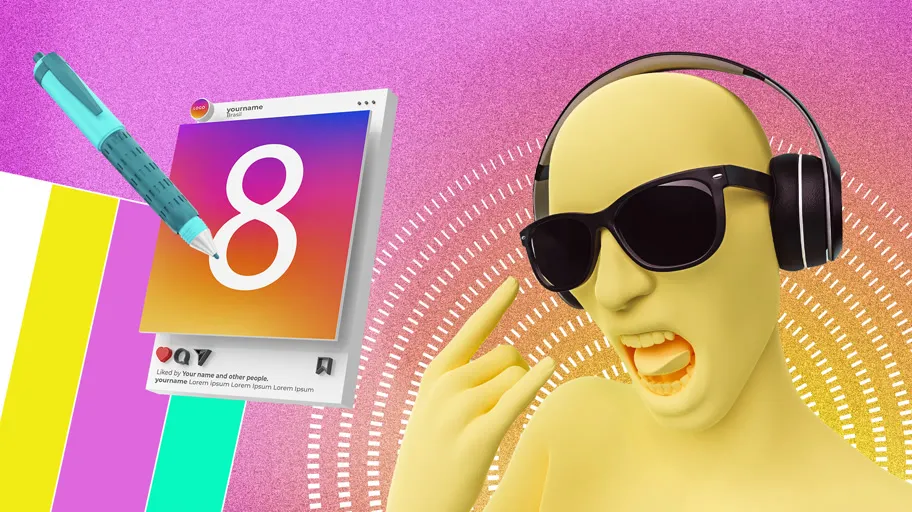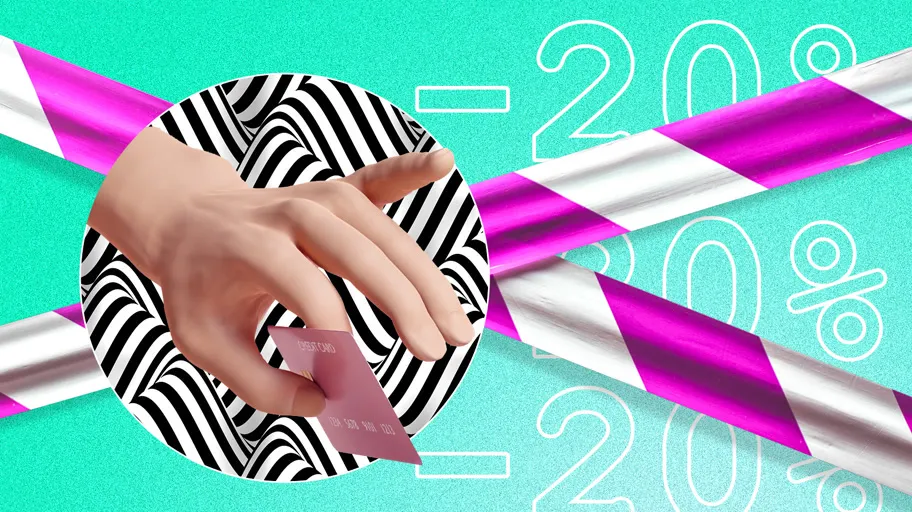
What is an introduction post on Instagram and when is it needed?
An Instagram introduction post implies a story about yourself. It is, however, important to put the focus not on the topic of the post, but on the task at hand to write a strong post. A welcoming post should convey a compelling message to the reader: "This blog is cool - you need to stay here”.
It is important to be clear about who you are and who your target audience is to fit this idea into 2,200 characters. What unique and useful things you can give to them? How do you differ from your competitor influencers? Think about what form can represent your introduction post when you have a clear understanding of what meanings to put in your story.
Let the introduction post for your blog be original. First of all, it is a better attention grabber and it is more memorable. Secondly, we don't write a welcoming post just when we need something to publish. An avalanche of introduction posts descends on the user on Instagram at the same time as yours. For example, when the user decided to participate in an educational marathon or win a car.
Looking to promote your brand? Check this post about how to find influencers on Instagram
8 ideas and examples for making great introduction posts
Just in case the muse has gone on vacation, we've prepared a guide for you to take action. Here's a selection of classic tricks and fresh ideas to introduce yourself to your followers on Instagram. You can mix it, but not shaking:Idea #1 - Good old-fashioned storytelling type of post
The template for such a post is simple: a story + a lesson + a call to action.
Story.
Tell a story that might be interesting to your audience. It can be a case from your life, your business or any other story that influenced your activity.
If you want to do well, it is essential to remember that a strong story is an emotional story. Don't be afraid to make followers smile or shed a tear. An engaged follower will not swipe down and forget what he read in 30 seconds. That's all we need.
It is important not to go overboard with emotion. Don't deliberately exaggerate otherwise the follower will suspect falsity. And don't try to show him all the colors of the world: first to make him happy, then to make him sad, then to call him to compassion... One story, one emotion.
Lesson or conclusion.
That's what the story was told for. Lead followers to the main moral and share your conclusions in two or three sentences.
For example, there are no magic pills. Everything has a price, and there are usually hundreds of bumps and a lot of hard work behind the pretty cover of success.
Call to action.
Don't leave your audience "up in the air". People, for the most part, want others to think for them and often follow instructions automatically. So, end the post with a call to action: follow the blog, share your experience in the comments, text to direct messages, etc.
For example: Write a story in the comments below about a time you overcame a challenge or achieved a goal. Let's inspire each other with our journeys!
Make a post about how you got into the profession or blogging, introduce your business or talk about the experience that characterizes you best. A successful introduction post can also grow out of a story about your mission and values. In general, the set of topics is limited only by the imagination of the author.
Related: how to design a content plan for Instagram
Idea #2 - The series type of post
If the story you want to share is long, feel free to pause it at the most interesting point. Your blog's reach will say thank you if the reader has to grab some popcorn and look forward to the next episode. And if you combine a series of Instagram posts with a common hashtag, you'll give the reach reasons to rejoice for an indefinite period.
Create a mini-series with Reels and get even more organic growth in your reach and brand awareness.
Idea #3 - A story about changes in your life’s ideas
Life is a journey filled with twists and turns, and along the way, our ideas and perspectives often undergo significant transformations. These changes can stem from personal experiences, new knowledge, or encounters with diverse cultures and people.
For example:
- After travelling to different countries, I realized that my initial perception of success was too narrow and began to value experiences and relationships more than material wealth.
- Following a health scare, I shifted my focus from pursuing external achievements to prioritizing self-care and inner well-being.
- Engaging with people from various cultural backgrounds broadened my perspective, leading me to embrace diversity and challenge my previously held biases.
Idea #4 - The story in numbers
For example:
3 is the number of children I have given birth to.
4 is the number of books I have published.
5 is the floor of the apartment where my family life began.
6 is the time on the clock that I hate waking up.
7 is the age at which I suddenly thought: "Here comes adulthood!"
8 is the number of years I have invested in feeding my children milk.
9 is the grade in which I finally accepted that I would never understand math... And so on.
Idea #5 - The most meaningful phrases in your life
Words have the power to inspire, motivate, and transform our perspectives. Certain phrases can leave a lasting impact on our lives, shaping our thoughts and actions in profound ways.
For example:
- «Believe in yourself» — this phrase from my basketball coach emphasizes the importance of self-confidence. When I started incorporating this idea into the content I create for my business, it shifted my focus from doubting my capabilities to fostering a growth mindset that empowers both me and my audience.
- «Think outside the template» — popularized by design and innovation expert David Kelley, this phrase encourages breaking free from conventional approaches. Adopting this mantra inspired me to explore new possibilities for my brand, leading to innovative and unique solutions.
- «Your business is a reflection of your values» — a principle championed by business philosopher Simon Sinek, this phrase highlights the importance of aligning your brand's mission with what truly matters. Embracing this idea prompted me to reevaluate and strengthen the core values of my business, creating a deeper connection with my customers and enhancing the authenticity of my brand.
Idea #6 - A Quiz
You probably saw publications like that on social networks: "Here are 10 facts about me, find two that aren't true”. The trick is old, but it still looks good and works. The winner of the guessing game can be offered a special prize. An introduction post for your blog may be written in the same format.
Idea #7 - Make a selection of strange facts about you
Friend of the previous idea for the post. It looks and doesn't look like it at the same time. Write something like this:
- More than (doing my own thing) I like solving math problems and salsa dancing.
- I'm not afraid to walk on a rope under a circus dome, but I'm terrified of ladybugs.
- I can not only sit in a negative split, but I can speak in the voices of all the characters of Sesame Street...
Check also: how to put music on IG stories?
Idea #8 - Introduction post as if it was a completed questionnaire
For example:
Name: John Wright
Occupation: content creator,
Superpowers: I professionally synchronize business processes, train the best, and build a dream team.
Watchword: if you do well, you'll be fine.
How to write an introduction post for commercial accounts?
At first glance, it may seem that the options for introduction posts for commercial accounts are somehow limited, but they are not. In this case, you can start from two components: the brand and the benefits of your USP or the personality behind the brand. Consider each option under a magnifying glass.
Focus on the benefits your customers receive if you decide to write about a product in a post. Talk to them in their language. If they appreciate uniqueness and quality - write about it. If you offer fast delivery, decent service, and a good price, then tell them about the delivery time, offer free consultation, and great deals.
The second option for a welcoming post for a commercial account is to introduce the brand creator or his team. Such a technique boosts audience loyalty, and thus encourages them to purchase. In addition, design features of the visual, creative photos and texts, and even the features of the product - all this can be copied. You only can't copy the personality. It's cool when an entrepreneur takes advantage of this to set himself apart from his competitors.
Check also Instagram bans: types and how to recover your account
In general, many ideas suitable for a personal account can be built into a brand profile as well. They just need to be adapted. It's appropriate to write personal about work rather than personal about personal in a commercial account. The story of the brand's creation is ok, but the story of your first high school love is not ok. A story of embarrassment in a sixth-grade geography class - no, 7 major job fails and what conclusions you came to - yes. And so on...
What to avoid in an introduction post
Even the coolest idea is easy to bury with poor writing skills. Don't do it like that:
- Don't be modest, but don't try to seem better at the expense of incredibly beautiful, exquisite adjectives either. You don't sound any more convincing with them. Honestly. A hundred percent. I can't be more precise.
- Avoid abstractions and cliches like "low prices, excellent quality, fast delivery”. Instead, it is better to explain how your innovative production technology will make customer’s life easier, what is the price of the goods you sell, etc.
- Don't use a lot of emojis. It's distracting.
- Leave the smallest details to your granny. Give only interesting and exciting facts in your content.
- Don't overcomplicate it. If you are intelligent and have reread the complete works of Tolstoy, that's cool. Speak in human language on Instagram. Easy texts are read better.
How to pick the right hashtags for your post
The text is written, the photo is ready, and it's time to publish. It looks like the end. But it's not quite there yet. It would be good not to forget about hashtags. Hashtags are a tool for other Instagram users to find your profile, so it's better to know how to create and use them.
1. Use a Mix of Popular and Niche Hashtags. For example, if you’re posting about sustainable fashion, you might use #sustainablefashion (niche) alongside #fashion (popular) to attract both general fashion enthusiasts and those specifically interested in sustainability.
2. Leverage Location-Based Hashtags. If your content is location-specific, incorporating geo-tags can attract local audiences who are more likely to engage with your posts. For instance, a local café could use #[CityName]cafe or #[CityName]food to attract locals and tourists interested in their area.
3. Engage with Trending Topics Thoughtfully. Keep an eye on trending topics and challenges related to your niche. Participating in these trends with relevant hashtags can boost your post’s visibility. For example, if there’s a trending challenge related to fitness, you could use #fitnesschallenge or #healthylifestyle to join the conversation.
4. Create Brand-Specific Hashtags. Developing unique hashtags associated with your brand can enhance brand recognition and encourage user-generated content. For instance, a brand launching a new product line might create a hashtag like #BrandNewCollection to track user engagement and generate buzz around the launch.
Conclusions
Social networking is definitely not for the lazy ones. It's all about being a marathon runner here. If you stop for a second, the competitors will repeat the best features of your blog and you will lose. You have to stand out from the crowd. Learn and practice, follow the trends and try new things, but always be yourself.



